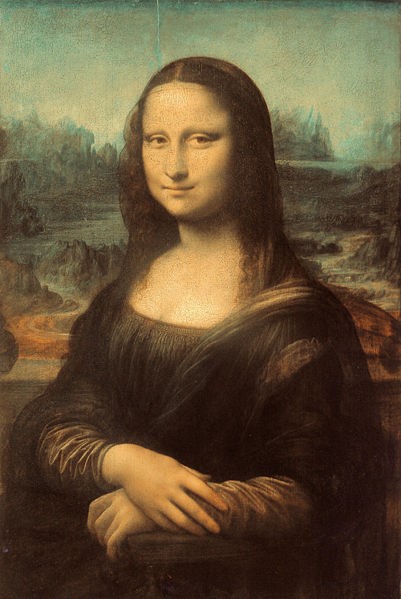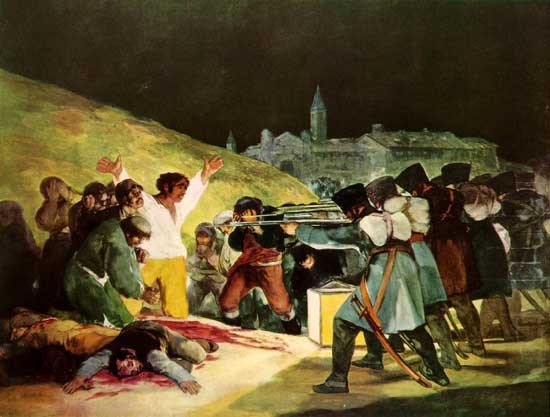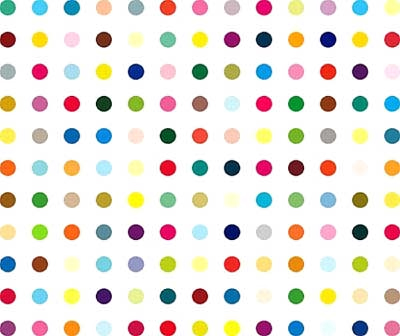Introduction
In the modern-day world of prevailing dynamism, that is moving from progress to greater progress, or better said beauty to higher beauty in an endless motion, underneath all ostensible pandemonium and bewilderment. The trend, which dominates the globe, is its demonstration of orderliness and maintenance, which display their external mark and at the same time symbolize the inflexible geometry of the cities of the world. In its smoke trails, in its analogous car tracks, and its streets, its factories, and the bridges and its gas tanks, by making use of the underscoring mechanical configuration, the artist could generate a new appearance of optimism through the simple shapes in art forms. This has happened down the ages of history in every century and artists in each century have depicted the society in their artwork through conscious formulations. In this paper, three painters and three paintings from three different centuries would be taken into consideration.
Mona Lisa by Leonardo da Vinci
The first painting ‘Mona Lisa’ is a 16th Century portrait by Leonardo da Vinci. Leonardo di ser Piero da Vinci born on April 15, 1452, was a Tuscan polymath; a scientist, mathematician, engineer, inventor, anatomist, painter, sculptor, architect, botanist, musician and writer. He is often tipped as the Renaissance man and a genius. This painting is also known as “La Gioconda”, the laughing one. (Foster, 37) In this painting, Leonardo da Vinci has painted the portrait of the wife of a wealthy Florentine merchant. This painting is famous for the elusive smile on the woman’s face. It has a mysterious quality particularly about the smile; Leonardo has subtly shadowed the corners of eyes and mouth. So, the exact nature of a smile remains mysterious, as if as a silent gesture of welcome. It is also known for its shadowy quality, the sensuous curve of woman’s cloth and hair; it came to be known as “sfumato” or Leonardo’s smoke, with imaginable rivers and mountains behind her. Another thing that is found is an unadorned dress. Leonardo used a pyramid design to leave the lady simple and calm. Her hands are folded, and her breast, neck and face glow in the same light. The face is brightly lit face which attracts the observer more. It is also noticeable that is no facial hair. X-ray examinations show that there are at least three versions of Mona Lisa under the present one. (Lamb, 136)

This painting tells many things about the social and cultural beliefs of the French people of the 16th century. Like there was no facial hair on the face of the Mona Lisa, researchers claim that for a woman of those times it was common to pluck facials here as they were deemed unsuitable. Also ‘unadorned dress’ worn by the woman in paintings is the dress worn by women of that era. It was a dress of modest length with less objectionable style. This was arguable among the first paintings to depict the imaginary landscape in the background of the subject ‘woman’. Perhaps it is a beginning of a new era.
The Third Of May 1808 by Francisco Goya

The second painting is by Francisco Goya, (“The Third Of May 1808”) painted in 1814. The provincial government of Spain commissioned this painting and the focal point was to represent the dead as martyrs. It should be stated that the artist was extremely successful in revealing the agony of the assassinated people and the cold rigidity of the assassins. The soldiers are placed on the right-hand part of the painting and are represented in dark and grey shades. On the other hand, the people being assassinated are painted in comparatively vibrant colors with the central figure, trying to escape death, in white. There is a touch of red, representing blood, on the ground on the central left part and the viewer’s concentration is immediately guided towards this part.
From the artist’s point of view, it can be stated that there was a dilemma of creating dramatic patriotism and maintaining the realist philosophy at the same time. Being a master of his work Goya maintained both the elements with great balance. The upheld arms of the central figure in white indicate the fear and pain of the character and induce minimum dramatic essence in the painting however, on closer look, the agony in the eyes reflects the true representation of real life. Thus, this painting evokes the pain of the death of martyrs in accordance with the point of view of the artist but still sticks to the fundamental of the realist beliefs of the artist. (Sayre, 355)
The basic style of the painting incorporates dramatization of death and assassination as the fundamental need of the painting demanded such elements. This is because the subject of the painting was formulated to evoke patriotic feelings and it had to be mixed with the fundamentals of the realist beliefs. The juxtaposition of these two modes of approach makes the painting an absolute piece of great artistry. The use of realism in a dramatic mode sustaining the elements of day-to-day subjects like a rifle, military boots, and costume make the painting one of the highest order of imagination and one of the greatest manifestations of the idealism of realism and the political condition of the society. (Foster, 87)
LSD by Damien Hirst
The third artist is Damien Hirst. “LSD” by the artist represents a wide view of the influence of modern culture. The artwork of Damien Hirst is deeply influenced by the modern world of complexities of culture that includes various parameters like social, political, technological, economic and religious aspects. He came into prominence during the early part of the 1990s among the British artists and dominated the art scenario of the UK. Soon he was recognized as a prominent international artist at the beginning of the 2000s. He is almost overwhelmed by the concept of death. It can be stated that his artistic philosophy has been shaped and influenced by two different and opposing essences. One is beauty and the other is death. It is an interesting factor that these two elements are closely associated among the cultural aspects of the modern world and the artist has been highly influenced by these elements. (Kar, 88)
These two elements gave rise to the elements of space and complexities of Hirst’s artwork. The main aspect of this picture, from a viewer’s perspective, is to look for the philosophic approach that the painter has taken to enumerate the stability and inconsistency of life. This work of art is exquisite because it places the viewer’s perspective that can be termed as bilateral. It is down-to-earth and materialistic in one way and at the same time, it renders the spiritual aspects of existence. Not many art forms are capable of evoking such aura and thus it could be termed as work right out of the grade one hall of fame. Overall, to summarize, it can be specified that LSD presents the most powerful analysis of space and the complexity related to existence and the eternality prevailing with all the differences and barriers imposed. Thus, more widely the term ‘space’ can be used to depict a specific type of creative fabrication as engendering by human beings, and the term more often than not implies some extent of aesthetic value, which depicts the sensory or sensory-emotional values of the artist, and sometimes even portrays sentiments and tastes of that person. Thus, space in LSD can be well defined as a component of literature. Literature, no doubt, records in it the life and society from which it emerges, in doing so it can never distort the truth or magnify it. Thus, like literature art is also a mirror of society.
Hirst started his life in a period of history that was a time when the world was going through a difficult phase after the horrors of the war juxtaposed with the influence of the beat generation. It could be mentioned in the initial stages that it was degeneration time. Imperialism had taken its tolls on the world, which was grilling on the last fires of the great wars. The losses were too heavy, and the shocks, almost unbearable. People just lived through a test of the extent-organized cruelty and purposeful ruthlessness could reach. As far as the future was concerned, the initial tremors of what would lead to a massive cross across the globe were being felt. In this context, it would be relevant to mention that the generation was not finding their existence worthwhile, or in other words, they wanted more out of their life for they hardly knew what to believe. They were not able to keep complete faith in religion and neither could they abandon it completely. The artistic influence of this time was confusing. They showed that the truth was no longer a romantic affair but it was more of a compulsion for which even lies would work well if that helps in survival. (Lamb, 227-9)

It was also a regeneration time. Ideological conflicts and military interests were shaking civilization right up to its foundations. The doubts, dilemmas, and confusions were gradually, quite slowly indeed, giving way to a new and unique cultural revolution. It was happening all across the Western world. People suddenly seemed to realize that there was enough political warfare to disgrace humanity. The prevailing standards suddenly seemed to be meaningless, and the insurgent youths wanted something different to happen. From these parameters, the formulation of complexities is well defined in Hirst’s work LSD. Simultaneously, the aspects of death also influenced him along with the opening up of the world economy and the concept of the global village. Under this parameter, he understood the influence of an emerging monoculture and homogeneous nature of art philosophy that became more open and adjusting as ever. (Thompson, 113)
Conclusion
In conclusion, it should be stated that all three of the artists painted in the form of social message and they believed that art should focus on social events and the manifestation of society should reflect on the canvas and the entire subject matter should be about different aspects of daily life with extreme success. They also believed that historical events, such as Spanish resistance, are as relevant as the daily life of a simple farmer or the high life of a wealthy duchess or the modern complexities, should be narrated most believably that they reflect the social strata and conveys social documentation. They said that there was nothing greater or more than in a picture but what was seen. All paintings represent accurate observation and represent the subject in the most social nature possible. It can be stated that to ascertain a piece of canvas to be judged as a work of art it is necessary to evoke a certain feeling within the viewers. There is no grammar involved in this part; no mathematics is needed; only the artistic sense is operational in this context from the part of the viewer. The interpretation may vary but the theme that evoked the interpretation of the viewer is all that is important to certify a painting as Art. In this context, too, these paintings come out with excellence.
Works Cited
Foster, Patience. Painting. Pennsylvania: Usborne, 1981.
Kar, Pulak. History of Realism. Kolkata: Dasgupta & Chatterjee, 2005.
Lamb, Davis. Cult to Culture: The Development of Civilization. Wellington: National Book Trust. 2004.
Sayre, Henry, M. A World Of Art; Upper Saddle River NJ: Prentice Hall, 2006.
Thompson, Don. The $12 Million Stuffed Shark: The Curious Economics of Contemporary Art. Ottawa: Doubleday Canada, Limited, 2009.